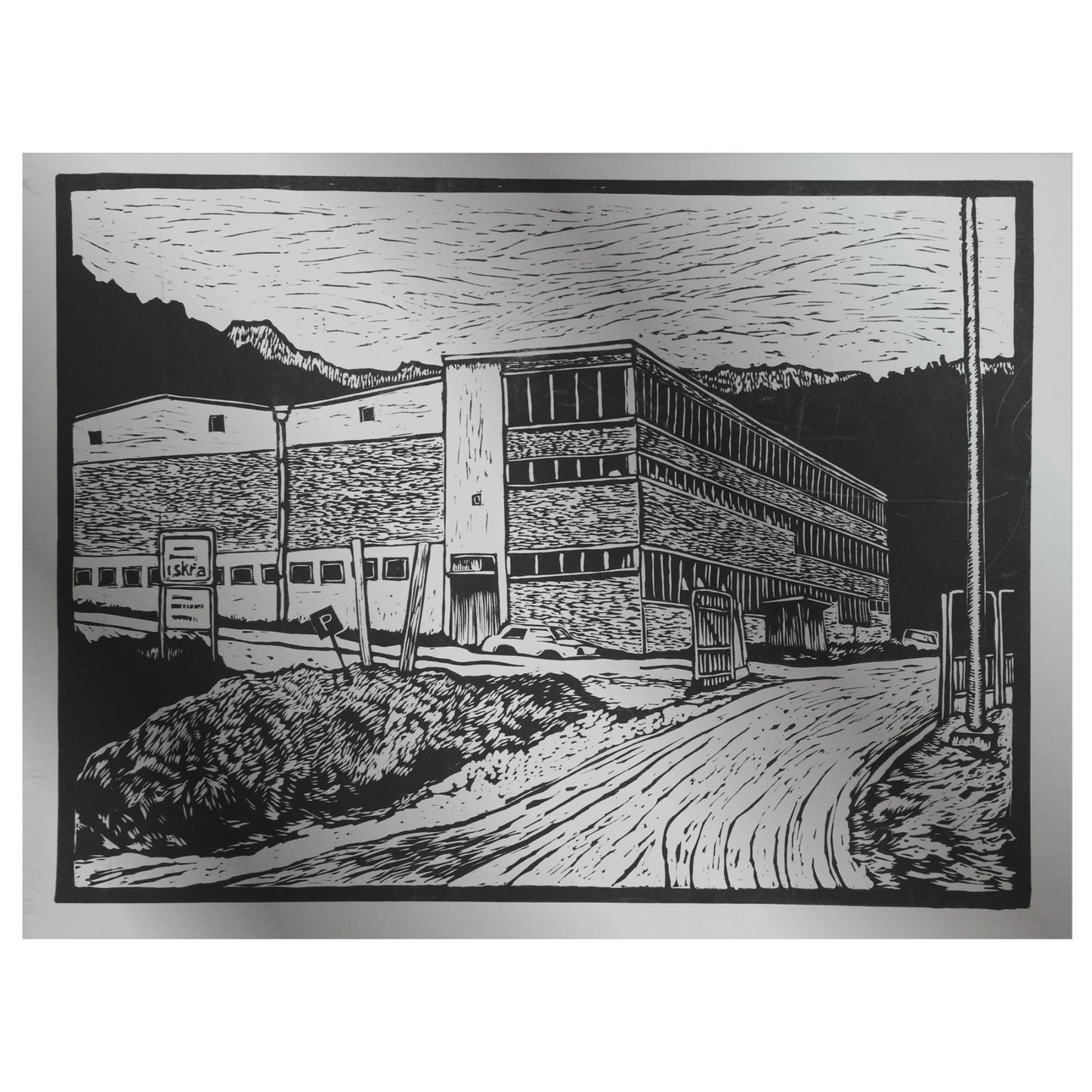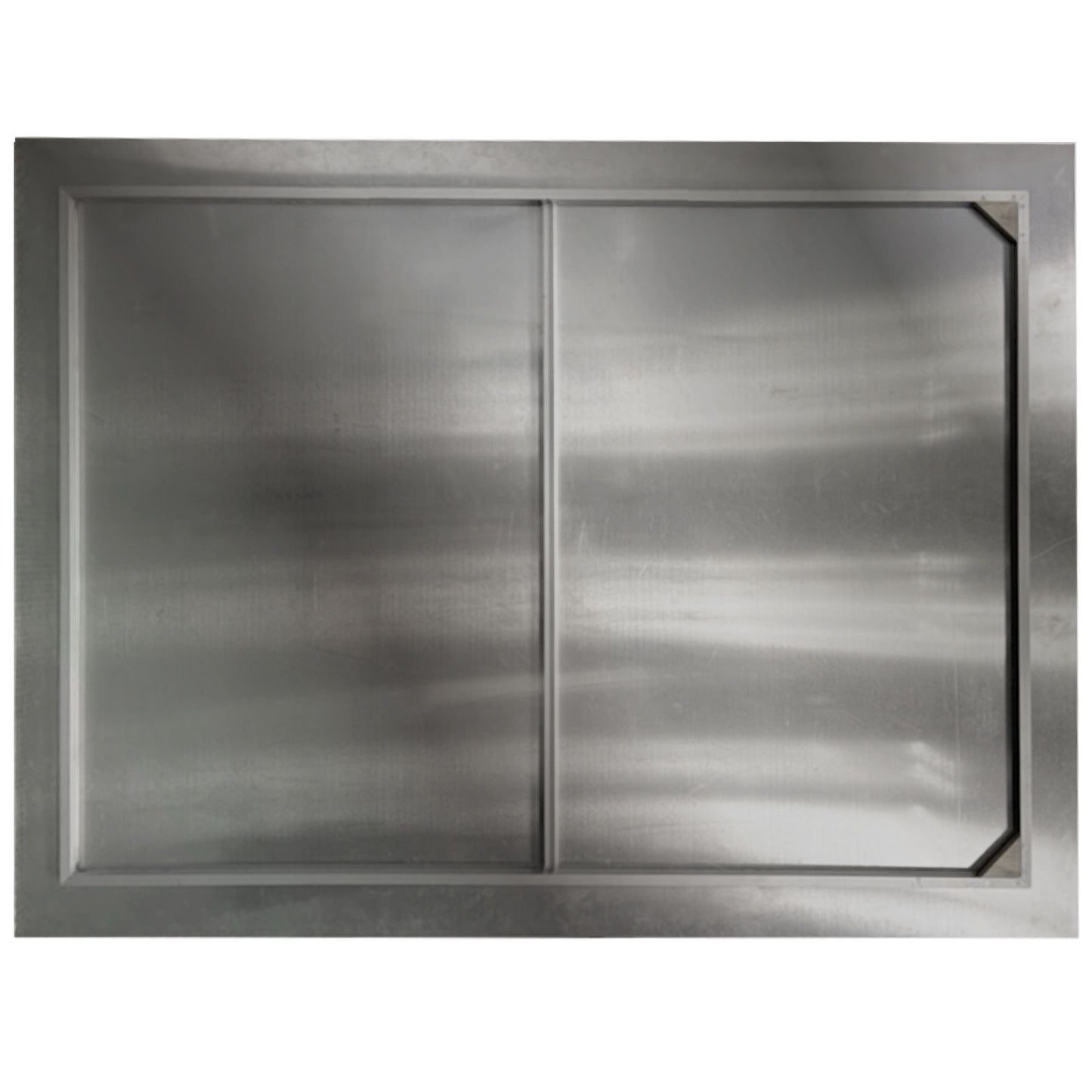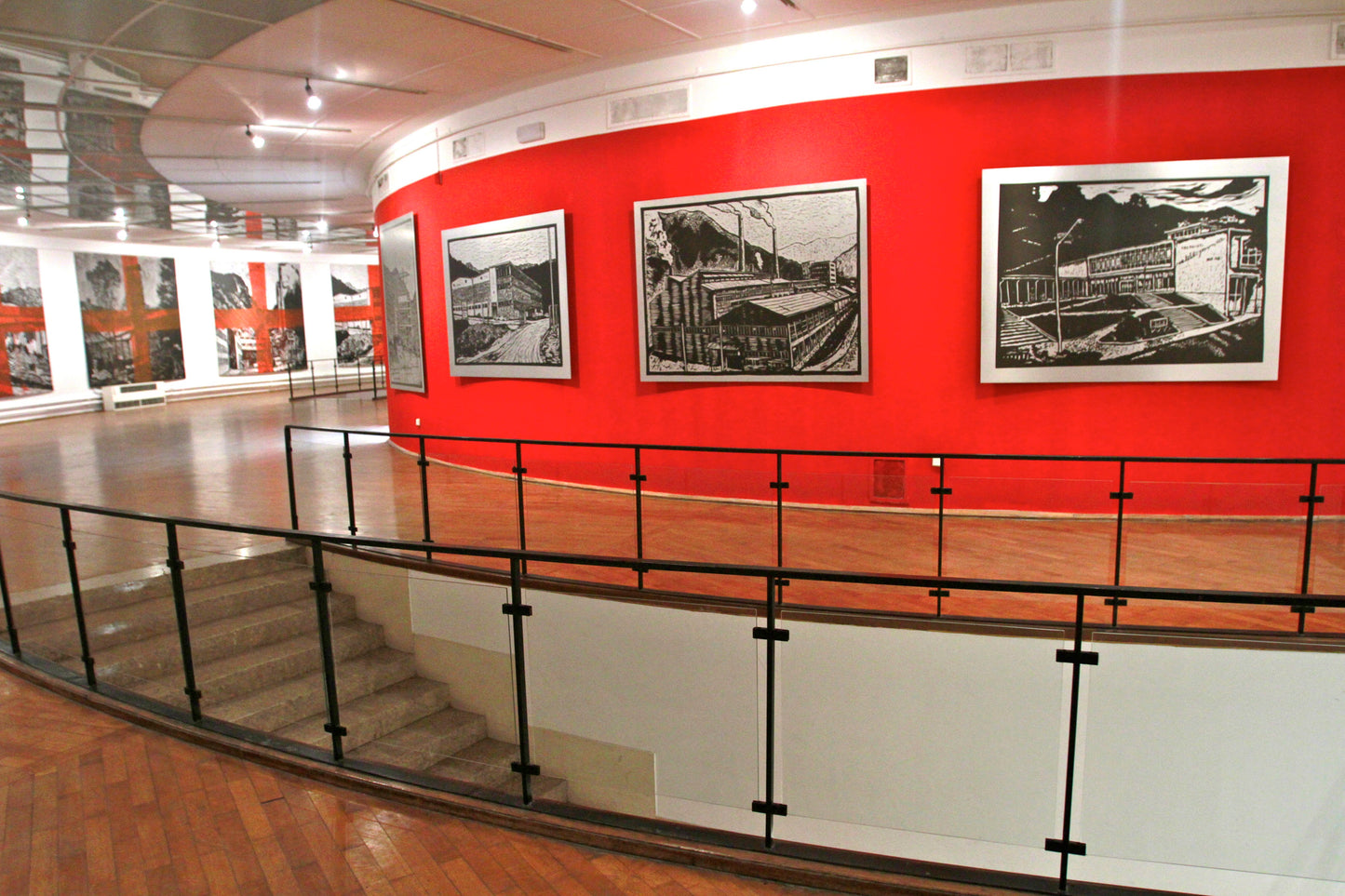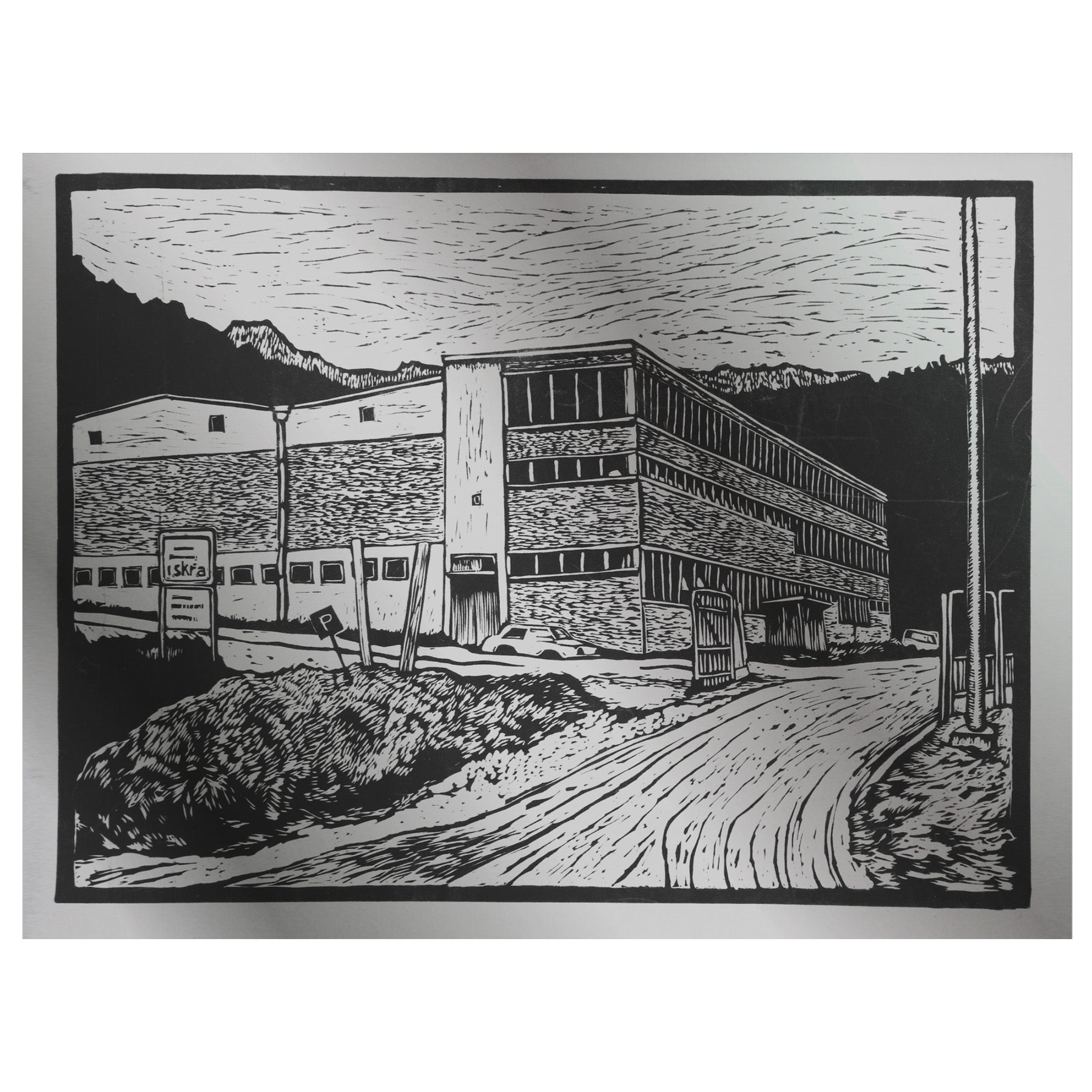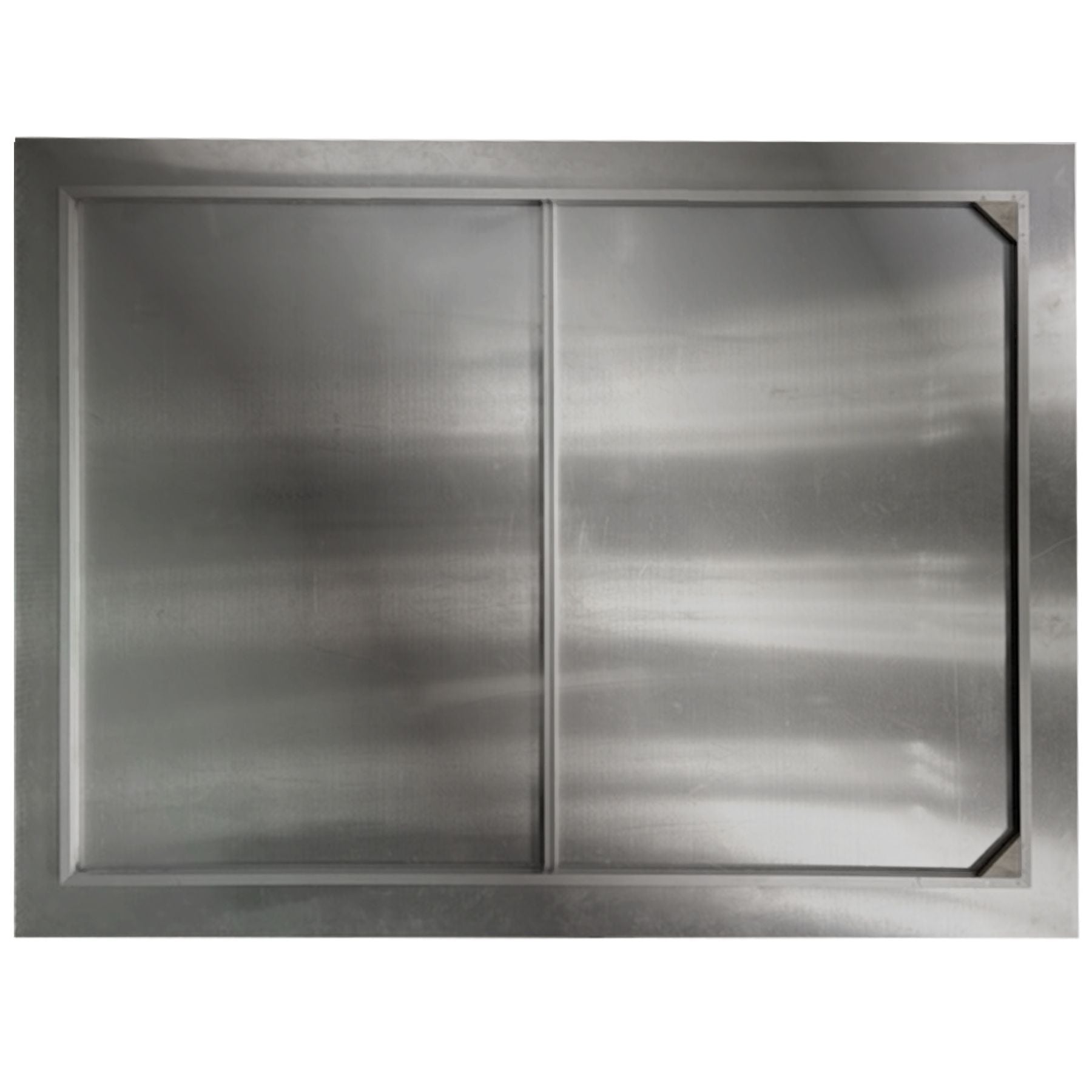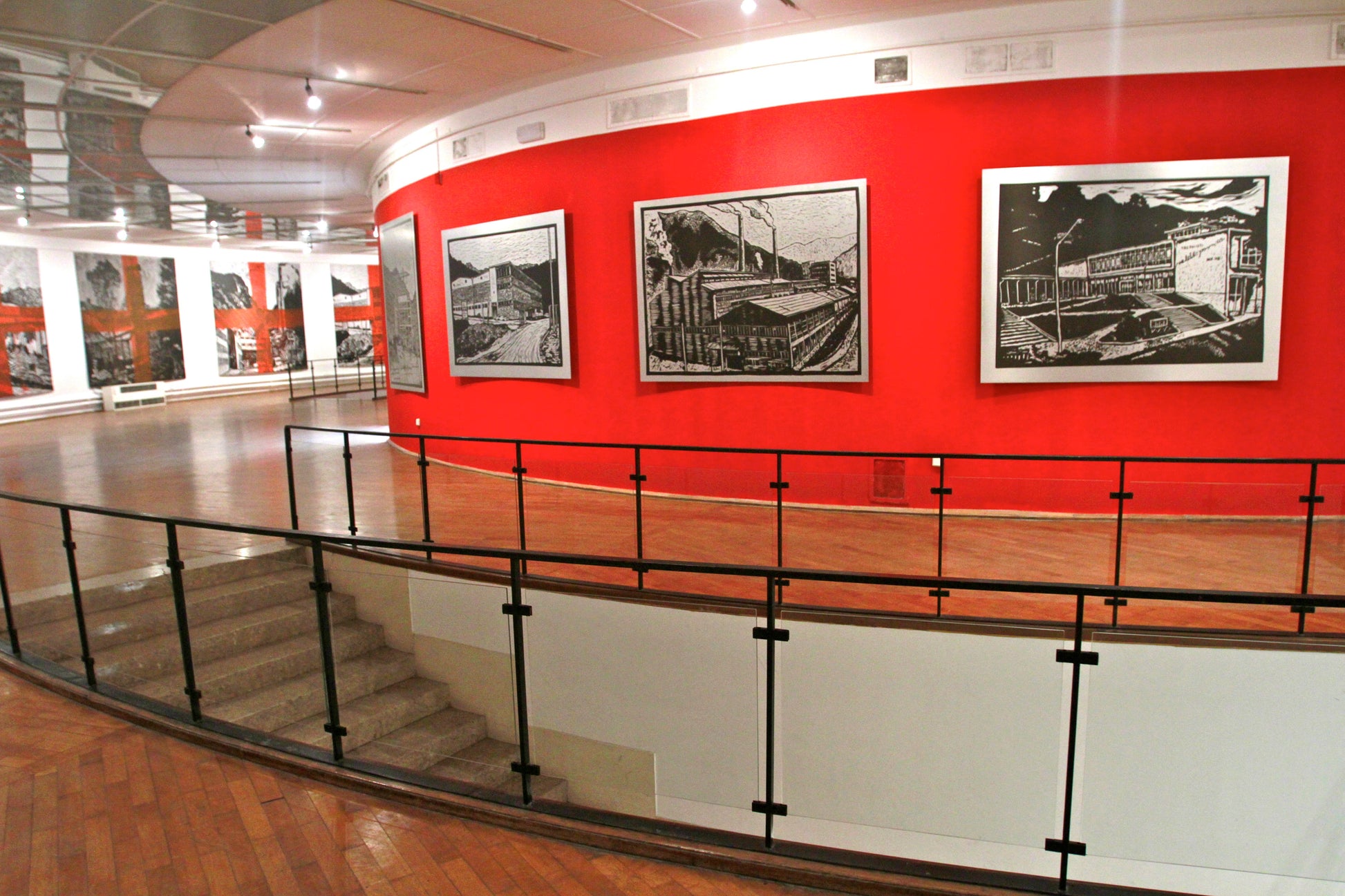Laibach WTC
RED DISTRICTS VIII, 1980 - 2009
Mixed media, print on aluminium plate, 150 x 200 cm
Unique work
Couldn't load pickup availability
RED DISTRICTS VIII – Iskra Factory Trbovlje, signed and stamped by Laibach
The 1946 Constitution in Yugoslavia guaranteed women the same right to work and similar pay as men. Zasavje was an industrial basin where men were employed in large numbers, but women's jobs were infinitely fewer. That is why 'women's' factories started to open And the Iskra semiconductor factory in Trbovlje was one of the factories in the Red Districts area that was originally set up to employ a female workforce. When it opened in 1964 it was considered a high-tech company–dealing as it was with diodes, transistors and selenium cells – things that the workforce had no immediate knowledge of and had to acquire it. In 1979 designer Davorin Savnih designed the ETA 80 telephone. Its extremely pure design represented an innovative solution at that time, and became the most copied product of Slovenian design around the world.
Mass employment factories for women symbolised the post-war era in the Red Districts almost as heavily as mining represented the male workforce. But just as the century neared its end so the lifecycle of women’s factory boom ebbed to its own conclusion. During Slovenia's independence, factories fell one by one and hundreds of thousands of female workers lost their jobs. The reason was mainly economic: the price of labour was too high in comparison to competition from the Middle and Far East. The jobbing businesses did not bring sufficient profits, even though the work of the women’s factories of Zasavje was respected for quality, productivity and valued, without exception.
The women's factories in Trbovlje and the Red District area were crucial in the social "resurrection" of women. Although the work was arduous, women were more independent and self-confident because of their own earnings. This was evident even when women's "factories" were being closed down.
But Iskra itself survived and recently Katapult, the business accelerator backed by Dewesoft, that is giving a new impetus to Trbovlje's economy recently, opened a 1,500 square metre base, in part of the Iskra factory premises where diodes were once assembled.
With Katapult, Trbovlje's economy is repeating Iskra's pioneering days. Now, on the ruins of the post war factories and industries, companies are springing up to give a new impetus to the region: from Iskra, the Katapult has risen.
Laibach is collaborating with both, Dewesoft and Katapult, and has created the Assimilator project with their help.
Terms and details:
Upon prior request, it is possible to view artwork live at a Laibach WTC location in Ljubljana, Slovenia. If you are interested in doing so, please write to wtc.support@laibach.org.
The listed price includes 9,5% value-added tax (VAT). If you are located outside the EU, or are a legal entity that is part of EU reverse charge system, you may take this into account when submitting your offer.
The stated purchase price is valid upon collection at a Laibach WTC location in Ljubljana and does not include the shipping, insurance, customs and excise charges, or import / export fees. After the payment for the artwork will be received, the Laibach WTC team will contact the buyer regarding collection or shipping.
Upon prior agreement with the buyer, and at the buyer’s expense, Laibach WTC can arrange shipping and possible insurance of the item. The shipping fee will depend on the location of the buyer and the size and weight of the item. When exporting artwork outside the EU, Laibach WTC will also prepare the necessary documentation for export customs clearance, but the buyer will be responsible for the payment the customs and excise and export / import fees.
For all other issues, the Terms of service of the Laibach WTC online store apply.
Laibach first presented the motifs of the Red Districts in 1980 at the Delavski dom (Workers' Home) culture centre in Trbovlje – at an exhibition that never took place (because it was banned by the local municipal authorities). Subsequently, Laibach presented the same motifs at their first exhibitions in Belgrade (Srećna galerija, 1981), Ljubljana (ŠKUC Gallery, 1982), and Zagreb (PM Gallery, 1983).
In the following decades, the group showed various variations of the Red Districts in some of their major exhibitions. In 2009, eight motifs were printed on aluminium plates and presented at retrospectives of their visual work in Łódź (Muzeum Sztuki, 2009), Maribor (UGM, 2011), Zagreb (HDLU, 2011), as well as in Olomouc (Galerie Caesar, 2016) and some other galleries.
The original linocuts represent historical motifs from the so-called Red Districts, as the industrial basin of Slovenia in the Zasavje region is called, which encompasses the towns of Trbovlje, Zagorje, and Hrastnik, i.e. the environmental area where the band Laibach were formed in 1980. These ‘industrial’ motifs became part of the basic aesthetic content of Laibach, which never denied their industrial-cultural origins, and after the formal establishment of the broader umbrella art formation Neue Slowenische Kunst (1984–1992), these motifs were adopted and appropriated from Laibach by other NSK groups, most notably by the Irwin painting group.
Share
